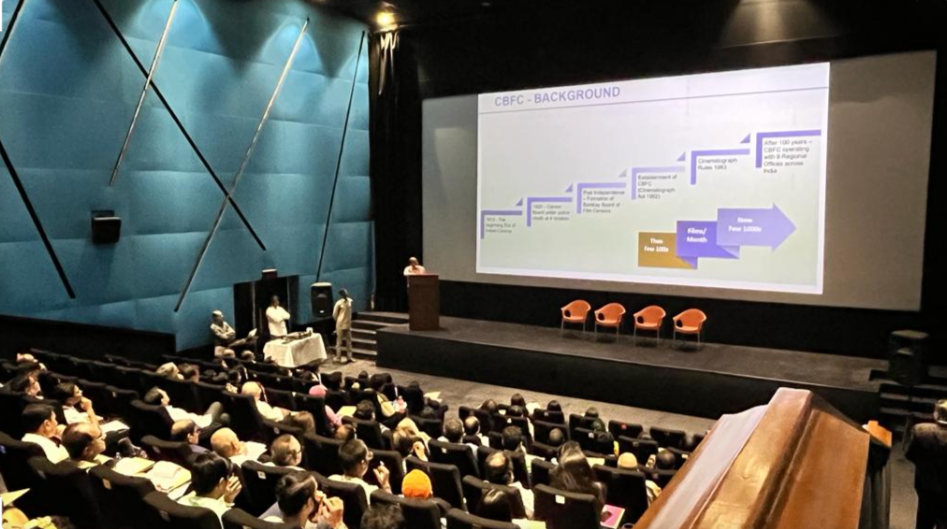Shreya Gupta
In the past week, there has been a recent spate of decisions by the Central Board of Film Certification (CBFC)—popularly mischaracterised as the “Censor Board”—that has yet again cast a harsh spotlight on its functioning. From ordering the renaming of a protagonist in Janaki v. State of Kerala, due to religious sensitivities, to demanding 127 cuts in Punjab ’95, and insisting on the insertion of a Prime Ministerial quote in Sitaare Zameen Par, the Board’s recent actions reflect a pattern of moral gatekeeping rather than objective certification.
These are not isolated misjudgments but part of a systemic issue: a deep-rooted structural failure wherein the CBFC acts as a censorial authority, operating far beyond the boundaries set by its parent legislation—the Cinematograph Act, 1952.
While the Act mandates the Board to merely classify films based on content suitability—Universal (U), Parental Guidance (UA), Adults (A), and Specific (S)—it also allows for suggestions of modifications. However, these suggestions are bound by statutory principles derived from Article 19(2) of the Constitution, such as sovereignty, public order, and decency.
The issue arises when these broad parameters are interpreted without clarity or consistency. Further exacerbating the problem are the vague and expansive government-issued guidelines under Section 5B(2), which allow for excessive discretion based on nebulous concepts like “vulgarity,” “morality,” or “human sensibilities.” In the absence of defined standards, decisions inevitably become subjective and inconsistent.
This moralistic overreach is evident in the CBFC’s own legal arguments. In Crossword Entertainment v. CBFC (W.P.(C) 11992/2016), for instance, the Board criticised the filmmaker for lacking the ability to be “aesthetically provocative” without vulgarity, a standard nowhere enshrined in law. Such justifications lay bare the Board’s attempt to judge not only the content but also the creative choices of filmmakers. The selective application of such standards is equally problematic.
Films with gratuitous violence or objectification often pass unchallenged, while those addressing politically uncomfortable or socially progressive themes—like Udta Punjab or Lipstick Under My Burkha—face heightened scrutiny. The Board justifies this inconsistency by claiming each film must be judged on its own merit, thereby sidestepping any obligation to adhere to precedent or principled reasoning.
Although the judiciary has consistently acted as a bulwark against such overreach—upholding artistic freedom and quashing arbitrary directives—the relief it offers is limited to those with the resources to pursue litigation. The cost of navigating the CBFC’s labyrinthine process, coupled with tight release schedules and financial stakes, means most filmmakers are compelled to comply, even when the Board’s decisions are unreasonable. As seen in Udta Punjab and Mohalla Assi, the CBFC’s tactics often delay or derail releases, making the process itself a form of punishment.
Historically too, this censorial instinct has been evident. The 1987 case of Beyond Genocide, concerning the Bhopal gas tragedy, saw objections to the use of the word “genocide” itself. Despite repeated calls for reform, including from the 2013 Mudgal Committee and the 2016 Shyam Benegal Committee, the CBFC continues to defy its statutory mandate. Both committees unequivocally urged the Board to abandon its moral adjudicatory role and limit itself to content classification, akin to a statutory advisory for viewers. Yet, meaningful reform has stalled, and even recent legislative amendments have failed to address the heart of the issue.
At its core, the debate around the CBFC is not merely bureaucratic or procedural—it is constitutional. The right to free speech and expression, particularly through cinema, is integral to public discourse in a democracy. Justice Sachdeva’s judgment in Mohalla Assi affirms this, emphasising that cinema’s power lies in its ability to provoke thought, critique power, and reflect the complexities of society. Unless the CBFC realigns its role with the constitutional principles of free expression and artistic autonomy, it will continue to stifle the very creativity it is meant to support. Legislative reform, coupled with a principled internal ethos, is no longer a recommendation—it is a necessity
Instagram: Click here
LinkedIn: Click here
For Collaboration and Business: dkbusinessnetwork@gmail.com

